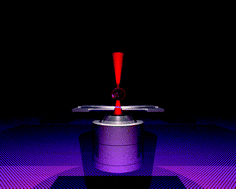Optical micromanipulation
Abstract
Optical micromanipulation has engendered some major studies across all of the natural sciences at the mesoscopic scale. Though over thirty-five years old, the field is finding new applications and has lost none of its dynamic or innovative character: a trapped object presents a system that enables a calibrated minuscule force (piconewtons or less) to be exerted at will, enabling precision displacements right down to the angstrom level to be observed. The study of the motion of single biological molecular motors has been revolutionised and new studies in the physical sciences have been realised. From the chemistry and microfluidic viewpoint, optical forces may remotely actuate micro-components and perform micro-reactions. Overall, optical traps are becoming a key part of a wider “optical toolkit”. We present a tutorial review of this technique, its fundamental principles and a flavour of some of the recent advances made.


 Please wait while we load your content...
Please wait while we load your content...